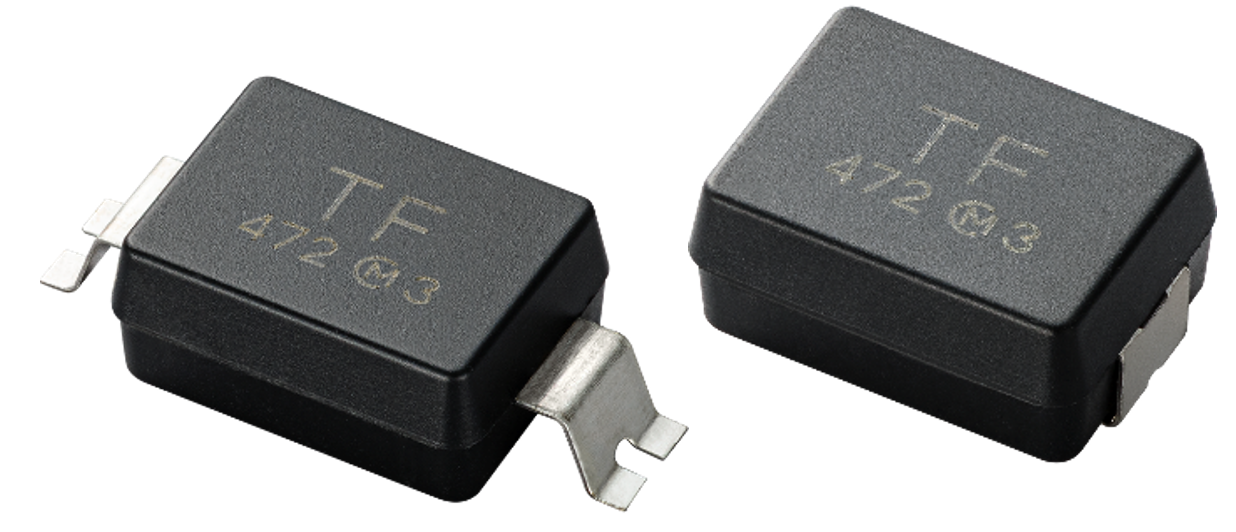How small capacitors are creating a sizeable increase in EV performance
Hybrid and battery-powered electric vehicles (EV) are revolutionizing the automotive industry, but the combined effort of moving away from internal combustion engines and the pace of EV development are creating some serious headaches. If the industry is to keep up with the pace of development, and more importantly the customer's expectations, car manufacturers and their suppliers need to seek innovation throughout every aspect of a vehicle. Even relatively small components, such as capacitors, play a vital role in the mass adoption of EVs.
One significant development currently underway is the increase in EV battery voltage, moving from the typical 400V packs to the 800V DC packs used in newer vehicles like the Porsche Taycan. By doubling the pack voltage, manufacturers can halve the current needed to deliver the same amount of power and reduce the energy lost because of resistive heating to a quarter. Lowering the current also allows for a reduction in wire diameter, creating lighter looms, reducing the vehicle mass and increasing its range.
The improvements delivered by higher voltage batteries also extend to the charging infrastructure. Some of today's most powerful chargers already use liquid coolants in their charging cables to combat resistive heating at very high currents. Higher-voltage, lower-current charging systems will reduce this requirement or allow for faster charging if they deliver the same current at a higher-voltage.
A capacitor's high-voltage design challenge
A battery pack's operating voltage is the result of the hundreds of individual 3-4V cells wired in series, with charging and discharging performance determined by the pack's composition and the controlling battery management system (BMS). But other components, such as safety capacitors, can also determine the maximum charging rate. For capacitor manufacturers, ensuring the components can pass vehicle safety tests whereby their components are tested at considerably more than their rated operating voltages for short periods is one challenge. As is ensuring the devices are reliable in continued service and robust to the harsh environment for the entire vehicle's life.

The EVA devices are the latest addition to Murata's range of safety capacitors, which also consists of DE6 components in a through-hole mounting package and KCA components that offer a creepage distance of 4mm. Despite being longer for increased creepage distance, EVA capacitors retain the KCA range's mechanical strength, thanks to the metal terminations and robust internal design. The end result is a product range that can withstand cracking induced by PCB flexure. In Figure 2, we can see the comparative reduction in strength between the EVA series and a chip capacitor. At just over 3mm deflection, the chip-based solution residual ratio has dropped to 20%.

The EVA ranges' structure also creates an increased resistance to solder cracking between the device and the board, as they pass through thousands of thermal cycles. Figure 3 shows a comparison between the EVA series and a normal chip capacitor.

Murata's innovative EVA range meets the latest industry AEX-Q200 quality standards, conforming to applicable RoHS legislations. Ensuring it is suitable for the harsh environment within a vehicle it features a peak operating temperature of 125oC and meets JEDEC Moisture Sensitivity Level Three (MSL3).
Summary
With the rapid development of electric vehicles challenging how OEMs are thinking about their designs, many automotive manufacturers are looking for new cutting-edge products to replace existing solutions. For component suppliers, this represents an opportunity to produce innovative components which are optimized for the latest EVs and deliver the automotive industry with greater performance gains. The introduction of the EVA MLCCs demonstrates Murata's advanced progress in product development for the EV market. As more individual components see similar improvement, EV designs will become more optimized, delivering the performance that the consumer market demands and fueling the widespread adoption of EVs.
